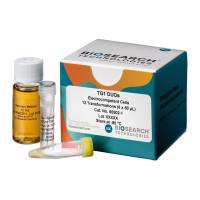Differentiation of H. pylori Strains Using PCR RFLP
互联网
809
Helicobacter pylori strains have been shown to display considerable heterogeneity with respect to DNA sequence. Diverse restriction fragment length polymorphism (RFLP) patterns are generated among strains by restriction endonuclease digestion of whole chromosomal DNA (1 -3 ), digestion of specific polymerase chain reaction (PCR) products (4 ), or arbitrary primer-PCR and random amplified polymorphic DNA-PCR (5 -7 ). These techniques demonstrate numerous distinct and reproducible patterns that can be used to differentiate strains. Sequence analyses of specific genes have confirmed that there are frequent nucleotide substitutions among strains, usually in the third position of codons, which may not result in amino acid substitution within the corresponding polypeptides (8 ). This type of heterogeneity is found in all H. pylori strains, whether they are considered virulent or nonvirulent.









